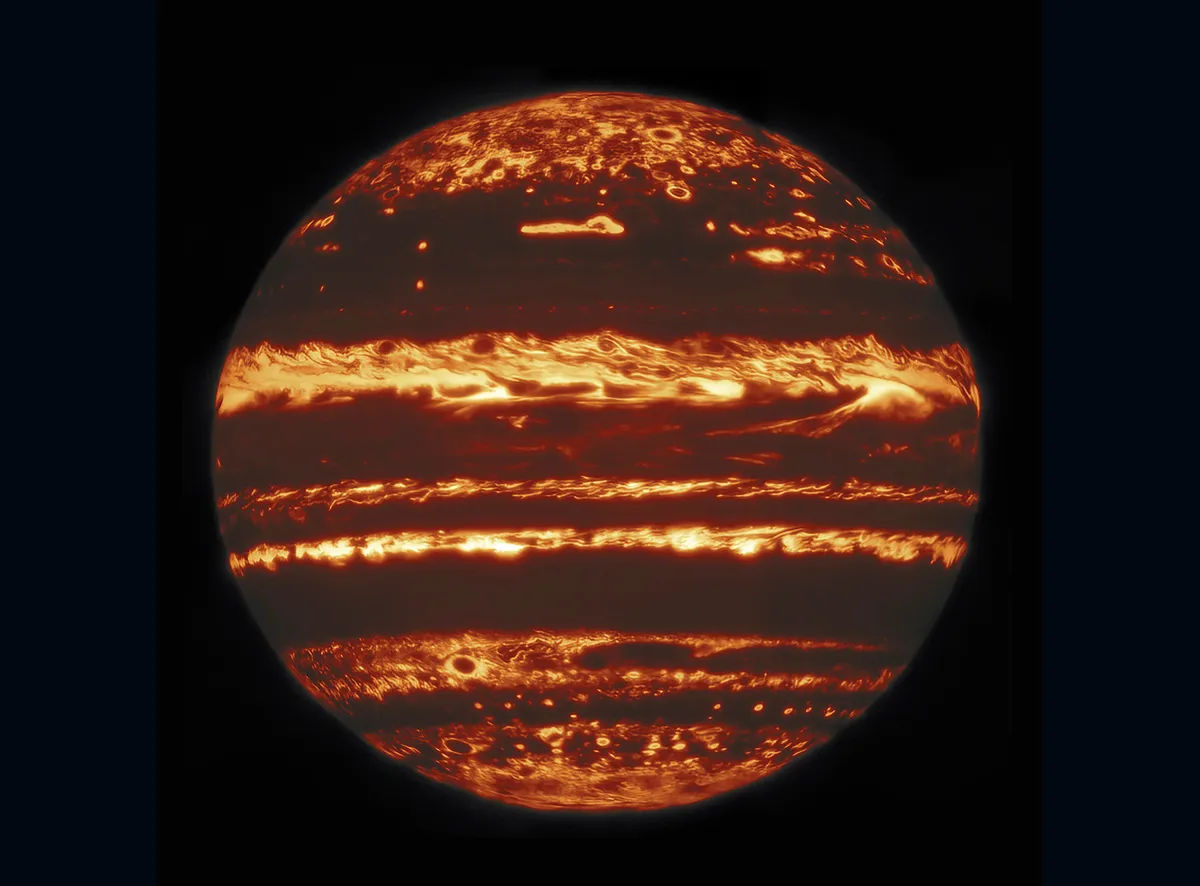
One of the highest resolution pictures of Jupiter ever taken from Earth, this image was captured by the Gemini North 8.1m diameter infrared telescope at Hawaii’s Mauna Kea.
Researchers used ‘lucky imaging’, assembling the picture from hundreds of very short-exposure shots, with only the sharpest portions – where the blur of Earth’s atmosphere was minimal – selected to build a global mosaic.
Infrared light can pass through Jupiter’s clouds to reveal the deeper layers of its atmosphere.
Alongside Hubble’s optical observations and radio data from the Juno spacecraft, the observatory is helping to reveal the secrets of our Solar System’s largest planet as never before.
For more incredible images of the cosmos, follow BBC Sky at Night Magazine on Instagram.
Image stats
- Observatory Gemini North Telescope
- 7 May 2020
- Image credit: International Gemini Observatory/NOIRLab/NSF/AURA MH Wong (UC Berkeley) and team

